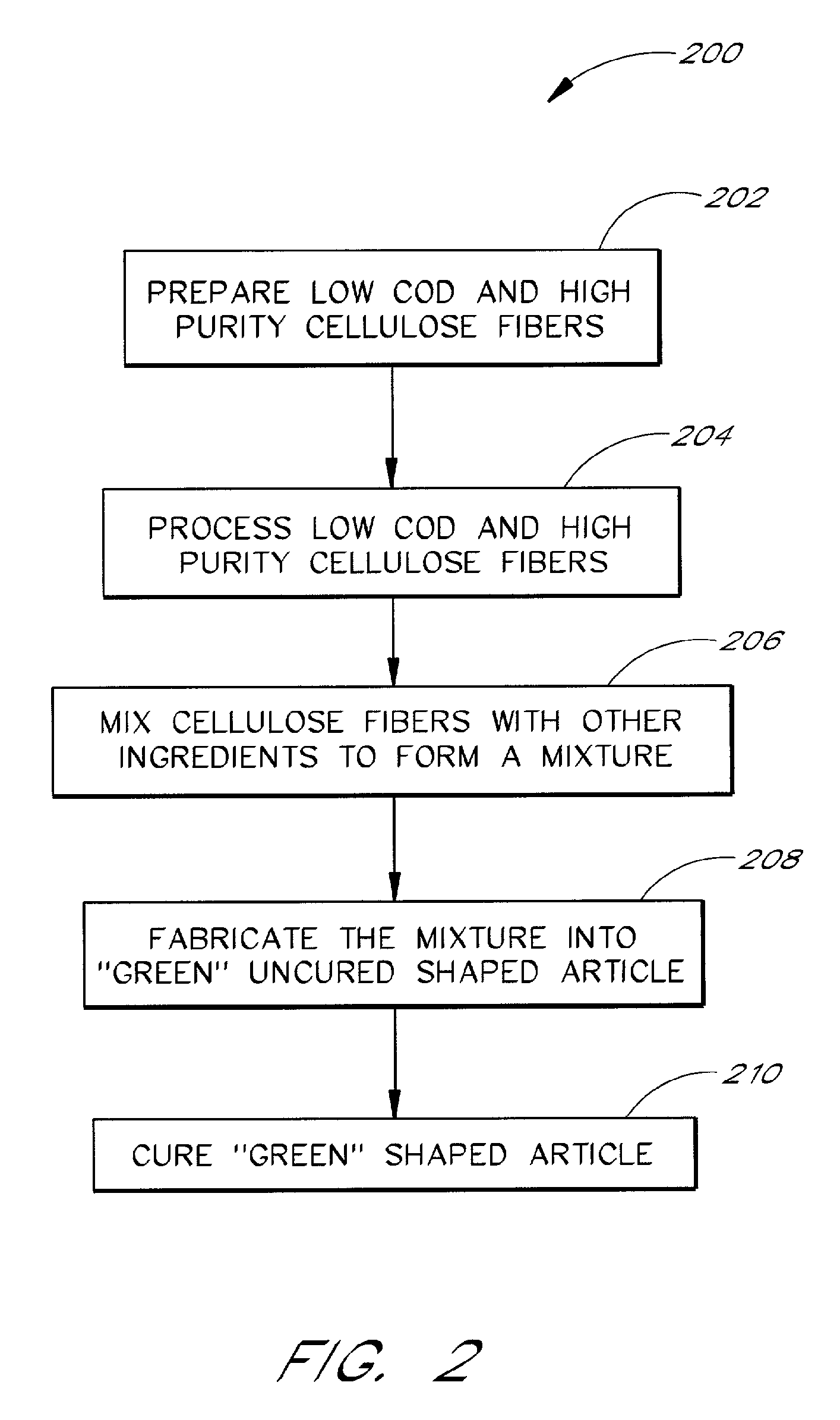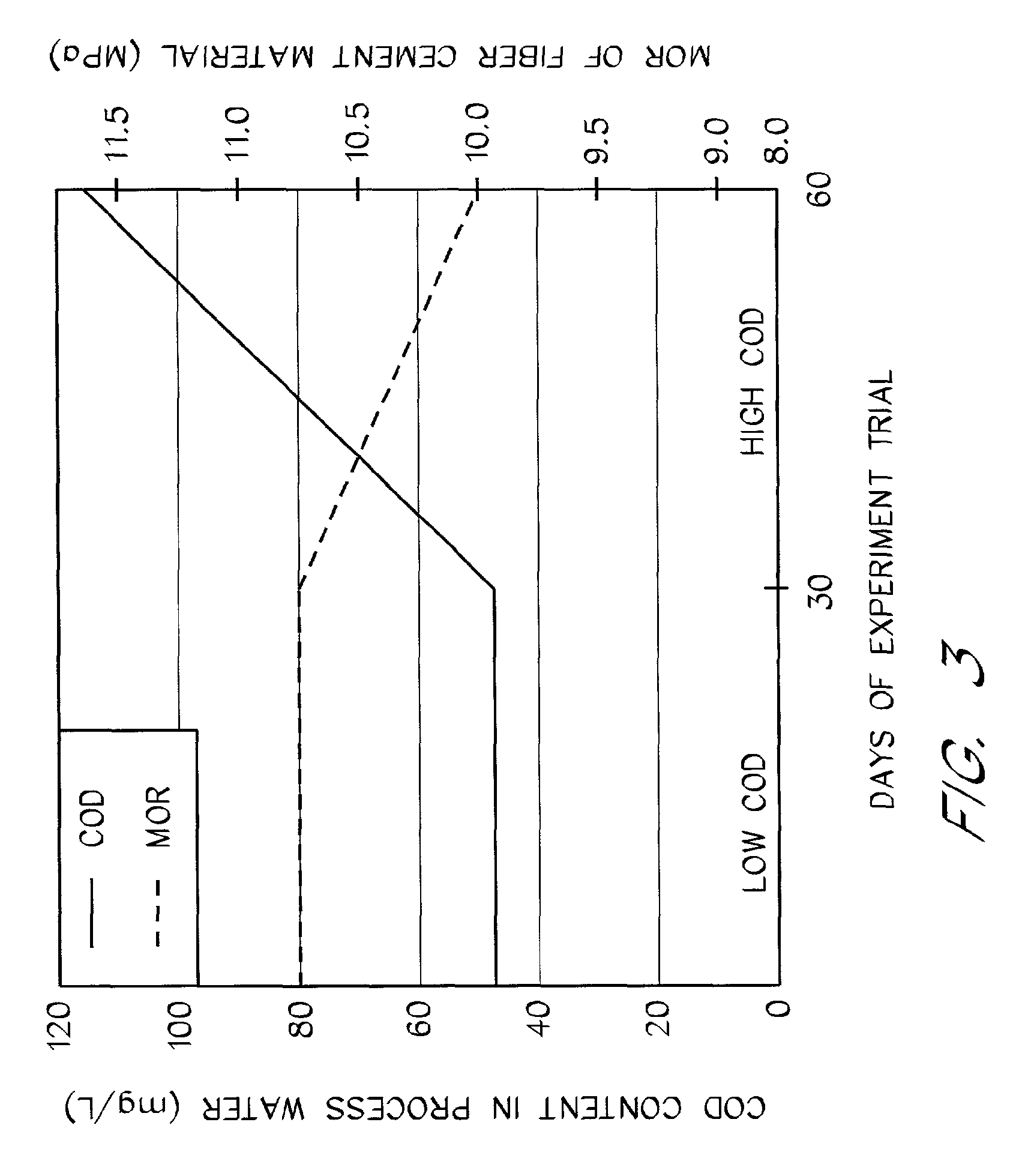Method and apparatus for reducing impurities in cellulose fibers for manufacture of fiber reinforced cement composite materials
a technology of fiber reinforced cement and impurities, which is applied in the field of cellulose fibers, can solve the problems of significant increase in the diffusion transportation rate of impurities, reduce fiber strength, and reduce fiber strength, so as to improve the physical and mechanical properties of fiber cement composite materials, reduce fiber strength, and effectively remove more impurities
- Summary
- Abstract
- Description
- Claims
- Application Information
AI Technical Summary
Benefits of technology
Problems solved by technology
Method used
Image
Examples
Embodiment Construction
[0035]The preferred embodiments of the present invention describe the preparation and application of low impurity fibers in cementitious fiber reinforced composite materials. These embodiments encompass not only the method of removing COD components from fibers, but also the formulation and the methods of manufacture of fiber reinforced composite materials formed from low COD and high purity fibers, as well as the properties of the final products. The treatment to remove impurities from pulps can also be implemented in conjunction with other fiber treatments. Further details on related chemical treatments of fibers are found in Applicant's U.S. Pat. No. 7,815,841 entitled FIBER CEMENT COMPOSITE MATERIALS USING SIZED CELLULOSE FIBERS; U.S. Pat. No. 6,777,103 FIBER CEMENT COMPOSITE MATERIALS USING BIOCIDE TREATED DURABLE CELLULOSE FIBERS; and U.S. Pat. No. 6,676,744 FIBER CEMENT COMPOSITE MATERIALS USING CELLULOSE FIBERS LOADED WITH INORGANIC AND / OR ORGANIC SUBSTANCES, the entirety of...
PUM
| Property | Measurement | Unit |
|---|---|---|
| temperature | aaaaa | aaaaa |
| retention time | aaaaa | aaaaa |
| temperature | aaaaa | aaaaa |
Abstract
Description
Claims
Application Information
 Login to View More
Login to View More - R&D
- Intellectual Property
- Life Sciences
- Materials
- Tech Scout
- Unparalleled Data Quality
- Higher Quality Content
- 60% Fewer Hallucinations
Browse by: Latest US Patents, China's latest patents, Technical Efficacy Thesaurus, Application Domain, Technology Topic, Popular Technical Reports.
© 2025 PatSnap. All rights reserved.Legal|Privacy policy|Modern Slavery Act Transparency Statement|Sitemap|About US| Contact US: help@patsnap.com



